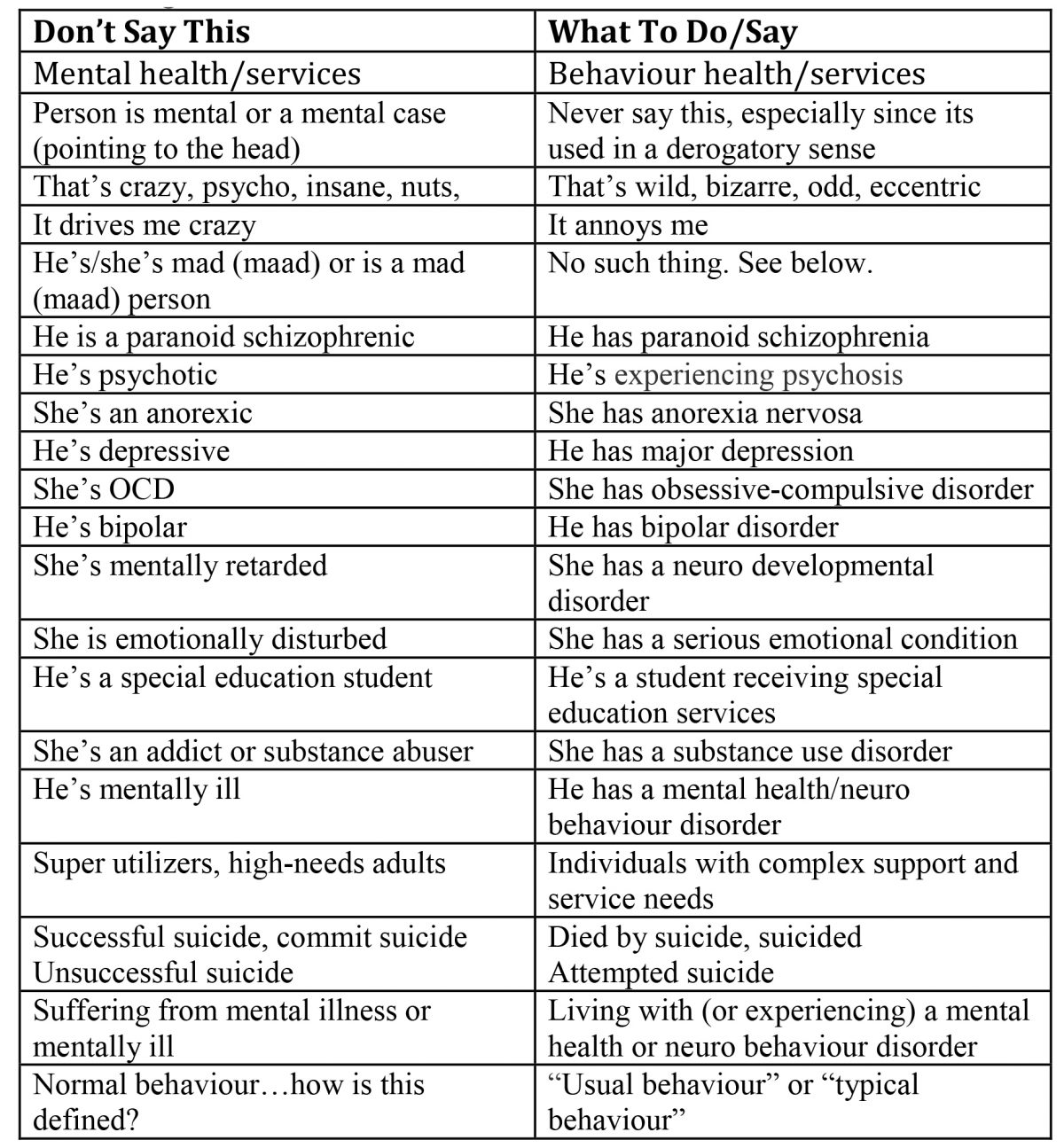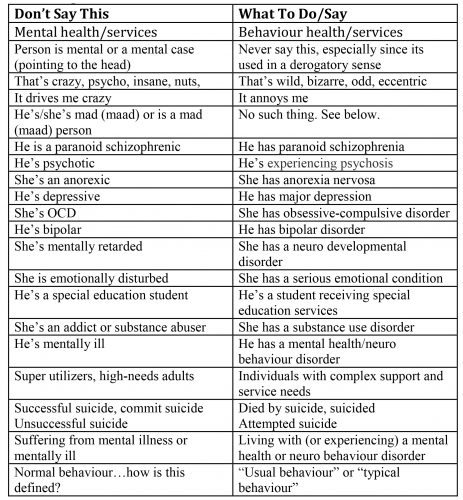Dear Editor,
“The difference between the right word and the almost right word is the difference between lightning and the lightning bug.” – Mark Twain
Language shapes how we see the world. The words we choose and the meanings we attach to them influence our feelings, attitudes and beliefs.
With respect to mental health, the use of language is critical to ensuring a recovery-oriented and person-centred approach. It is important that people are seen first as people and not seen as their mental health condition. People are not Schizophrenic, Bipolar, or Borderline. People are not cases or illnesses to be managed. In effect, language that emphasizes the person, not the condition or disability is a way to demonstrate respect for a person’s dignity and worth. This is sometimes called person-first language.
Many people experience mental distress and while this may be a problem for them, it does not necessarily mean they are ill. We talk about the health condition only when necessary. It is important, use respectful language, which literally means putting reference to the person first in a phrase. For example, instead of calling someone “mentally ill,” a more respectful, people-first way of phrasing it is to say “a person living with a mental health condition.” And, the term ‘mental health problem’ should be changed to brain disorders or neuro behaviour disorder, especially since the term mental has distasteful, negative, demeaning associations. As well:
The chart provides some examples of the language that is appropriate and inappropriate. The bottom line is that in the context of mental illness, mental health, and wellbeing, negative, labeling language can be experienced as condescending, isolating, and stigmatising, whereas positive words, people-first language convey dignity, empathy, and hope.
Yours faithfully,
Annan Boodram


